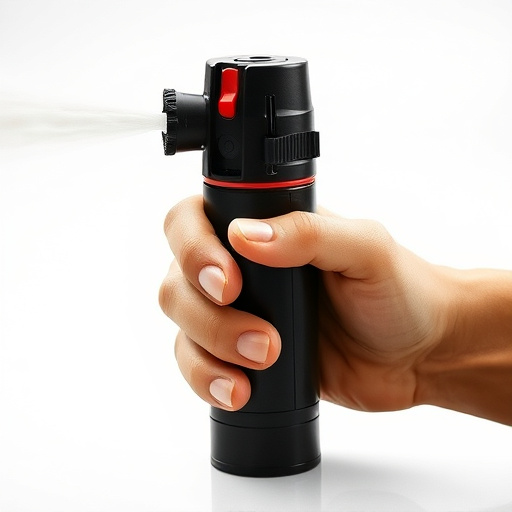Bear spray and personal pepper spray differ in purpose, with bear spray deterring aggressive bears in outdoor environments through high capsaicin concentration, while personal pepper spray is designed for self-defense against humans and smaller animals in urban areas, featuring lower capsaicin levels, higher accuracy, and portability. Bear spray offers wide range and temporary incapacitation, ideal for outdoor wildlife encounters, whereas personal pepper spray is suitable for close-quarters defense against humans, providing quick disruption at short ranges. Legal acceptance of personal pepper spray as a self-defense tool is broader than specialized bear spray regulated for wildlife deterrence. The optimal choice depends on environment and target, ensuring individuals select the most suitable self-defense tool for their unique circumstances (Bear Spray Vs Personal Pepper Spray).
“In the realm of self-defense, bearing the power to deter potential threats, Bear Spray and Personal Pepper Spray stand as two distinct tools. This article delves into the intricacies of these defense mechanisms, highlighting their unique properties and effectiveness. We explore the key differences between Bear Spray, designed for wildlife encounters, and Personal Pepper Spray, tailored for personal safety. Through a comprehensive analysis, we weigh the pros and cons of each, guiding readers in making an informed decision to choose the right self-defense option based on individual needs.”
- Understanding Bear Spray and Personal Pepper Spray: Key Differences
- Pros and Cons of Each Defense Tool: A Comprehensive Analysis
- Choosing the Right Self-Defense Option: Factors to Consider
Understanding Bear Spray and Personal Pepper Spray: Key Differences
Bear spray and personal pepper spray are both defensive tools designed for self-protection, but they serve very different purposes and have distinct properties. Bear spray, as the name suggests, is specifically formulated to deter aggressive bears that may pose a significant threat in outdoor environments, especially in mountainous regions or forests where bear encounters are possible. It uses capsaicin, the same compound found in chili peppers, but in much higher concentrations to create an effective barrier against large wildlife.
In contrast, personal pepper spray is designed for self-defense against humans and smaller animals. While it also contains capsaicin, the concentration is lower, making it legal in many areas where bear spray isn’t. Personal pepper spray is typically easier to carry and conceal, making it a popular choice for individuals who want a readily available defense mechanism in urban or high-crime areas. The key difference lies in their target audience and usage scenarios: bear spray for wildlife encounters and personal pepper spray for human aggressors.
Pros and Cons of Each Defense Tool: A Comprehensive Analysis
When comparing bear spray and personal pepper spray, understanding their unique pros and cons is essential for making an informed choice as a defense tool. Bear spray, designed to deter bears, offers a wide reach and can be effective at a greater distance, making it advantageous in outdoor settings where wild animals are prevalent. Its long-range effectiveness provides users with peace of mind while hiking or camping in bear country. However, bear spray may not be as effective against human aggressors due to its limited accuracy beyond a certain range.
Personal pepper spray, on the other hand, is tailored for self-defense scenarios against humans. It’s highly accurate and can temporarily disable an attacker by causing severe irritation and pain. Pepper spray is easily portable and accessible, allowing users to carry it conveniently. Yet, its short-range effectiveness means it may not be suitable for situations where distance plays a crucial role in safety. In terms of legal considerations, personal pepper spray is generally more widely acceptable as a self-defense mechanism compared to bear spray, which is specialized and regulated for wildlife deterrence.
Choosing the Right Self-Defense Option: Factors to Consider
When considering self-defense options, understanding the differences between bear spray and personal pepper spray is crucial. Both serve as effective deterrents, but their applications and strengths vary significantly. The primary factor to consider is the intended target and environment; bear spray is designed for outdoor scenarios, particularly encounters with aggressive wildlife like bears. Its large range and ability to temporarily incapacitate an animal make it a powerful tool in remote areas where pepper spray might not offer adequate protection.
On the other hand, personal pepper spray is tailored for close-quarters defense against human assailants. It’s more effective at short ranges, offering a quick burst of irritants to disrupt an attacker’s vision and breathing. Pepper spray is versatile and easily portable, making it suitable for various situations, from daily commutes to high-risk jobs. The choice between bear spray and personal pepper spray depends on the user’s needs; understanding these distinctions ensures individuals select the most appropriate self-defense tool for their specific circumstances.
When deciding between bear spray and personal pepper spray, understanding their distinct properties is key. While both offer valuable self-defense options, bear spray excels in deterring larger animals like bears due to its long range and fast-acting irritants, while personal pepper spray is more effective against smaller threats, providing a close-range, intense sting. The choice depends on your specific needs and the potential threats you may face. By considering factors like range, effectiveness, and legal considerations, you can make an informed decision to ensure your safety in various outdoor scenarios. Remember, knowing your defense tool is as important as knowing when to use it.
